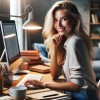Between reality and illusion If you want to know what trading really means—beyond luxury cars, piles of cash, and...
Some terms for new day traders
Day trading
- The short-term trading of financial instruments within a single trading day. Example: You buy a share in the morning and sell it in the afternoon of the same day.
Broker
- A financial services provider that executes buy and sell orders. Example: You use a platform like Interactive Brokers to buy and sell stocks.
order
- An instruction to buy or sell a financial instrument. For example, you place an order to buy 100 shares of Apple at a price of $150 per share.
Long Position
- Buying an asset in anticipation of a price increase. Example: You buy 50 shares of Tesla because you believe the price will increase.
Short Position
- Selling a borrowed asset in anticipation of a price drop. Example: You borrow 100 shares of Amazon, sell them immediately, and hope to buy them back later at a cheaper price.
Stop Loss Order
- A sell order that is triggered when a price reaches a certain level. For example, you set a stop loss at $45 to limit losses if the stock price falls from $50.
Take Profit Order
- A sell order to take profits when a price reaches a certain level. For example, you place a take profit order at $200 after buying shares at $150.
Trailing Stop
- A dynamic stop loss that adjusts to the rising price of an asset to lock in profits and limit losses. For example, you buy a stock at $50 and set a trailing stop at a distance of 5%. If the stock rises to $60, the stop loss automatically adjusts to $57.
Spread
- The difference between the buy (ask) and sell (bid) price of an asset. For example, if the bid price is $99 and the ask price is $101, the spread is $2.
Margin
- Capital borrowed from a broker that is used to trade larger positions. For example, you use margin to buy $2,000 worth of stocks with $1,000 of your own money.
Leverage
- The use of borrowed money to multiply the potential return on an investment. For example, with 5:1 leverage, you can trade $5,000 worth of positions with $1,000 of equity.
volume
- The number of units of an asset traded in a given period of time. For example, if 1 million shares of Microsoft are traded in a day, the trading volume is 1 million.
liquidity
- The ability to buy or sell an asset quickly without a significant price disadvantage. Example: Stocks of large companies like Apple are very liquid because they trade frequently.
volatility
- A measure of the price fluctuations of an asset over a period of time. For example, a stock that fluctuates between $50 and $100 in a short period of time has high volatility.
Support
- A price level at which a falling asset is expected to find support and stop falling. For example, a stock bounces multiple times from a price level of $50 - this is considered support.
Resistance
- A price level at which a rising asset is expected to encounter resistance and stop rising. For example, a stock repeatedly reaches a price of $100 but then always falls back - this is considered resistance.
Candlestick
- A chart type that shows the price movements of an asset, with the "candlestick" showing the open, high, low, and close prices. For example, a green candlestick shows that the close price is above the open price.
Chart patterns
- Visual formations on a price chart that can help predict future price movements. Example: A "head and shoulders" pattern often indicates a trend reversal.
indicator
- A statistical tool that helps traders assess the direction and strength of price movements. Example: The Relative Strength Index (RSI) is used to identify overbought or oversold conditions.
trend
- The general direction in which the market or an asset is moving. Example: An uptrend occurs when the price is consistently increasing over a long period of time.
Pullback
- A short-term price correction within an overarching trend. Example: A share price rises continuously, but briefly falls by 5% before rising again.
Breakout
- The price breaks through a key support or resistance level. For example, if a stock that has repeatedly found resistance at $100 suddenly rises to $105, a breakout has occurred.
Scalping
- A strategy in which traders take advantage of small price movements to make quick profits. Example: A trader buys and sells a stock within a few minutes to make a profit of 0.5%.
Swing Trading
- Holding positions for several days or weeks to profit from medium-term price movements. For example, you buy a stock at $50 and sell it a week later at $60.
Risk management
- Strategies to limit potential losses and protect capital. Example: You only risk 1% of your trading capital per trade to avoid larger losses.
Position Sizing
- Determining the size of a position based on risk and account size. For example, if you risk 2% of your capital, your position size is $200 on a $10,000 account.
Slippage
- The difference between the expected and actual execution price of an order. For example, you want to buy a stock at $100, but the order is executed at $101.
Limit Order
- An order that will only be executed at a certain price or better. For example, you place a limit order to buy a stock only if it costs $50 or less.
Market Order
- An order that is executed immediately at the current market price. Example: You place a market order and buy a stock at the currently best available price.
Bid-Ask Spread
- The difference between the highest price buyers are willing to pay (bid) and the lowest price sellers are willing to accept (ask). Example: The bid price is $99 and the ask price is $101.
Earnings Report
- A quarterly report from a company detailing its financial results. For example, if Apple reports better-than-expected earnings, its stock price could rise sharply.
dividend
- A regular distribution of profits to shareholders. Example: A company pays a dividend of $2 per share to its shareholders.
pip
- The smallest price change that can be traded in the Forex market. For example, in the EUR/USD pair, a change from 1.1234 to 1.1235 is equal to one pip.
Forex (FX)
- The foreign exchange market where currencies are traded. Example: You exchange euros for US dollars in the forex market to profit from exchange rate changes.
Futures
- A contract to deliver an asset at a specific price at a future date. For example, you trade a futures contract on crude oil that is due to be delivered in three months.
Options
- A contract that gives the right, but not the obligation, to buy or sell an asset at a specific price. Example: You buy a call option on Tesla, which gives you the right to buy the stock at a set price.
ETF (Exchange Traded Fund)
- A fund that is traded on the stock exchange and tracks an index, sector or other assets. Example: The S&P 500 ETF reflects the performance of the 500 largest U.S. companies.
Margin Call
- A request from the broker to deposit more funds into your account to hedge open positions. For example, if your positions lose value, you will be required to provide additional funds to meet the margin call.
Hedging
- A strategy to minimize potential losses by taking offsetting positions. For example, you hold a long position in a stock and simultaneously buy a put option to protect yourself against a decline in price.
arbitrage
- Buying and selling an asset simultaneously on different markets to profit from price differences. For example, you buy Bitcoin on one exchange at a lower price and immediately sell it on another at a higher price.
Liquidity providers
- An institution or dealer that provides liquidity by offering buy and sell orders at set prices. Example: Large banks often act as liquidity providers in the forex market.
VIX (Volatility Index)
- An index that measures the expected volatility of the S&P 500, also known as the "fear barometer." Example: A high VIX value signals increased market turbulence.
Return rate (retracement)
- The percentage of correction of a price movement compared to the previous trend. Example: The price of an asset corrects by 50% after a sharp increase.
Fibonacci retracement
- A technique for identifying potential support and resistance levels using Fibonacci numbers. Example: A drop to the 61.8% Fibonacci level is often considered a strong support area.
EMA (Exponential Moving Average)
- A moving average that gives more weight to recent price movements. For example, a 50-day EMA gives you a smoothed view of a stock's medium-term trend.
SMA (Simple Moving Average)
- A moving average that evenly weights price movements over a specific period of time. Example: A 200-day SMA is often used to assess long-term trends.
RSI (Relative Strength Index)
- An indicator that measures the ratio of upside to downside to identify overbought or oversold conditions. For example, an RSI above 70 indicates an overbought situation.
MACD (Moving Average Convergence Divergence)
- A trend-following indicator that analyzes the relationship between two moving averages. For example, if the MACD rises above the signal line, this is considered a buy signal.
Drawdown
- The decline in an account balance from its peak to its lowest point during a losing streak. For example, your account falls from $10,000 to $8,000, which is a 20% drawdown.
Equity
- The total value of your account, including open positions. For example, your equity is $10,000 if you have open positions with a market value of $1,000 and $9,000 in cash.
Liquidity Trap
- A market situation in which there is no additional investment despite low interest rates. Example: Central banks cut interest rates to zero, but companies do not invest.
Bull Market
- A market characterized by rising prices. Example: During a bull market, most stocks continually increase in value.
Bear Market
- A market characterized by falling prices. Example: During a bear market, stock prices fall over a long period of time.
Penny Stocks
- Stocks that trade at very low prices, often below $5. For example, you buy 1,000 shares of a company for $0.50 each in the hope that they will go up.
Blue Chip Stocks
- Shares of large, established and financially solid companies. Example: Shares of companies like Microsoft and Coca-Cola are considered blue chips.
Market Capitalization
- The total value of all of a company's outstanding shares. For example, a company with 1 million outstanding shares, each worth $50, has a market capitalization of $50 million.
Fundamental analysis
- The analysis of a company's financial data to determine its intrinsic value. Example: You analyze a company's income statement to assess its profitability.
Technical Analysis
- Analyzing price charts and indicators to predict price movements. Example: You use the RSI and MACD to find a suitable time to buy a stock.
Bollinger Bands
- A technical indicator that represents price volatility through two bands around a moving average. Example: A price reaching the upper Bollinger Band can be considered a signal of an overbought market.
Head and Shoulders
- A chart pattern that signals a trend reversal from bullish to bearish. For example, if the price falls after a head and shoulders formation, it indicates a possible downside move.
Volume
- The number of units of an asset traded in a given period of time. For example, a stock that is traded 10 million times in a day has high trading volume.
HFT (High Frequency Trading)
- Algorithm-based trading that executes large volumes of orders in fractions of a second. Example: An HFT algorithm detects minimal price differences between markets and exploits them before human traders can react.
Circuit Breakers
- Mechanisms that suspend trading when there are extreme price movements to prevent market panic. For example, if the S&P 500 falls 7% in a matter of minutes, trading will be suspended for 15 minutes.
Pair Trading
- A market-neutral strategy in which a trader simultaneously takes a long position in one security and a short position in another. For example, you might go long in an undervalued stock and short in an overvalued stock in the same sector.
Algorithmic Trading
- The use of computer algorithms to automate trading decisions. Example: An algorithm automatically buys stocks when certain technical indicators are met.
Market Maker
- A dealer who provides buy and sell orders for a particular security at set prices to keep the market liquid. Example: A market maker continuously provides buy and sell prices for a stock and earns the difference between the bid and ask.
Sharpe Ratio
- A measure of the risk relative to the return of an investment. Example: A high Sharpe ratio means that a portfolio achieves a high return with relatively low risk.
Profit Factor
- The ratio of gross profits to gross losses in a trading system. Example: A profit factor of 2 means that profits are twice as high as losses.
Risk-Reward Ratio
- The relationship between the potential profit and the potential loss of a trade. For example, a trade with a potential profit of $200 and a potential loss of $100 has a risk-reward ratio of 2:1.
Backtesting
- Applying a trading strategy to historical data to test its effectiveness. For example, you might test a new trading strategy on the last five years of data to see how it would have performed.
Posted in:
Introduction to Day Trading

















